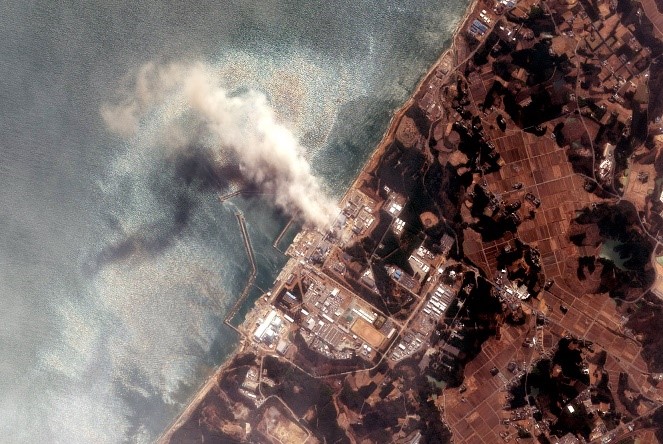Description

Disclaimer: Copyright infringement not intended.
Context:
- Japan is expected to start flushing 1.25 million tonnes of wastewater from the embattled Fukushima nuclear power plant into the Pacific Ocean this year. It is a part of a $76-billion project to decommission the facility.
Nuclear Waste Water:
- Water is a vital tool for all nuclear power stations: it’s used to cool their heat-generating radioactive cores. During the cooling process, the water becomes contaminated with radionuclides – unstable atoms with excess energy – and must be filtered to remove as many radionuclides as possible.
- The filtered water is then stored in huge steel tanks or released into nearby bodies of water. As huge amounts of water are required by every plant, most nuclear facilities are built on coastlines – or, in the case of Chernobyl, surrounded by huge lakes. That way, filtered wastewater can be discharged into the ocean or lake once it’s been assessed and confirmed safe by authorities.
The case of Fukushima Nuclear Waste Water:
- Fukushima dealt with wastewater in the same manner as mentioned above while the plant was operating.
- But in March 2011, after a magnitude 9 earthquake, a tsunami flooded the Fukushima Daiichi nuclear power plant in Okuma and damaged its diesel generators. The loss of power suspended coolant supply to reactors at the facility; the tsunami also disabled backup systems.
- Since then, authorities have used more than a million tonnes of water to try and cool the plant’s disabled reactors, which are still hot due to the long-term release of energy from the nuclear power source.
- All that radioactive water – which is more contaminated than standard waste water – has to go somewhere.
- Japan has said that it will release this water into the Pacific Ocean over the next 30 years.
.jpeg)
What could the impacts be?
- The Tokyo Electric Power Company (TEPCO), which operates the Fukushima facility, has said it has treated the water to remove most radioactive isotopes.
Concern
[South Korea banned seafood imported from around Fukushima, to Japan’s displeasure, from 2013.]
- Any discharge of radioactive materials will increase the risk of cancer and other known health impacts to those who are exposed.
- Another problem is that TEPCO hasn’t removed tritium from the water because this is very difficult to do. Tritium is “easily absorbed by the bodies of living creatures” and “rapidly distributed … via blood.
- There were other radionuclides in the water that TEPCO’s treatment procedure couldn’t entirely remove. These include isotopes of ruthenium and plutonium, which could persist for longer in the bodies of marine creatures and on the seafloor.
What are Japan’s other options?
- Some have asked why the Japanese government can’t store the water for longer and then discharge it. This is because tritium’s half-life – the time it takes for its quantity to be halved through radioactive decay – is 12-13 years.
- The quantity of any other radioactive isotopes present in the water will also decrease in this time (each isotope has its own half-life). So, at the time of discharge, the water could be less radioactive.
Path Forward:
- Researchers have rightly called for more studies to understand the precise composition of each tank before it is flushed and for more details about TEPCO’s water-treatment process.
- The most urgent priority is to set internationally accepted regulations for radiation exposure levels across different species.
- Rapidly developing technology like nuclear fusion – mimicking the Sun’s way of generating energy by fusing hydrogen atoms to form helium, and converting that helium into energy – may eventually slash generation of nuclear waste.
Must Read- Nuclear Fusion: https://www.iasgyan.in/daily-current-affairs/nuclear-fusion
- There’s also room for improvement of our existing nuclear facilities to help minimize waste generation: for example, by forcing radioactive byproducts to decay faster.
Note: Half-life is the length of time it takes for half of the radioactive atoms of a specific radionuclide to decay. A good rule of thumb is that, after seven half-lives, there will be less than one percent of the original amount of radiation.
We are what we eat: our health as a global community depends on the health of the environment, and a contaminated ocean knows no geographical or political borders.

https://www.thehindu.com/sci-tech/science/explained-japans-decision-to-flush-fukushima-wastewater-into-the-ocean/article66432630.ece














